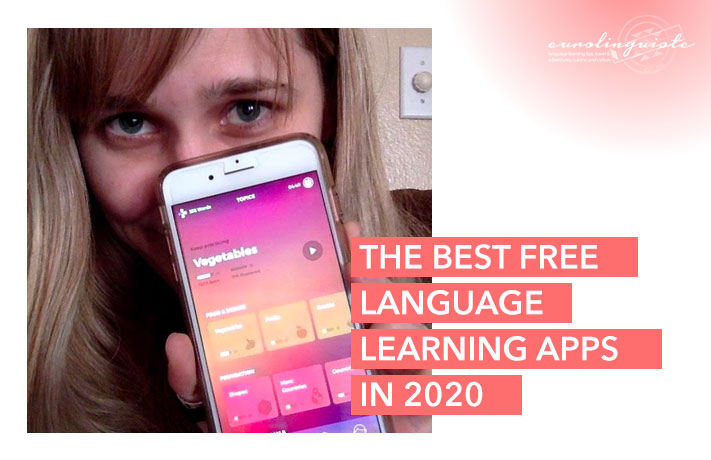Ling App Review: Trying Out the Ling Language Learning App
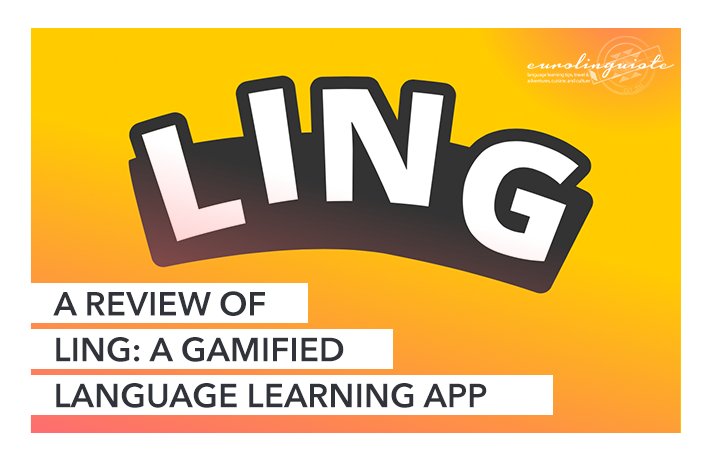
My name is Shannon Kennedy and I'm the language lover,…
When I first started out as a solo language learner, the resources available to me were mostly language learning course books and software. Today, it often seems the reverse is true — there are almost too many language learning resources available.
So how do you filter through everything available to find what’s right for you?
Answering this question is one of the things I aim to do in writing reviews of some of the language learning products out on the market. I’m happy to jump in, try things out, see where their strengths lie and where they might not be a good fit.
And today, I’m sharing my experience using Ling with you.
Full disclosure: Ling gave me access to the Premium version of the app in order to write this review.
Now, let’s get into the details.
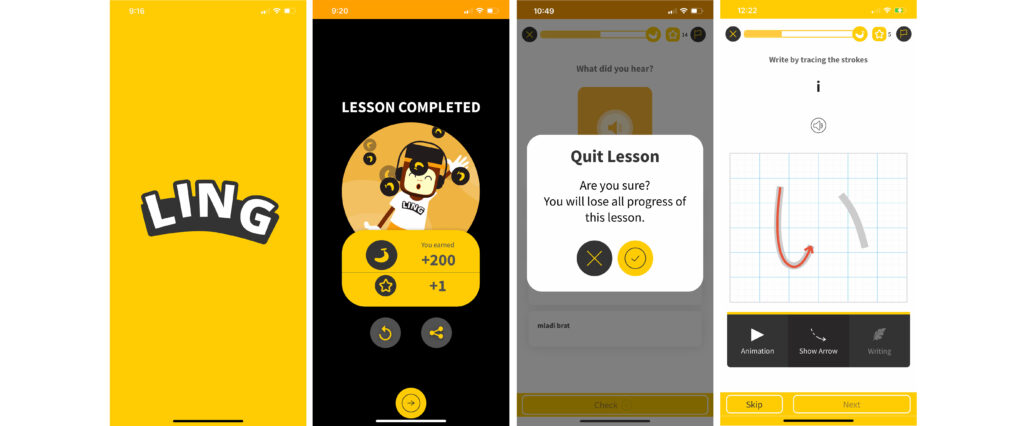
What is Ling?
Ling is a language learning app available for iOS and Android devices, as well as on the web. Developed by Simya Solutions, a company based in Thailand, Ling uses a gamified learning experience to help you build a foundation in a new language.
With loads of mini-games and exercises, Ling has a mix of interactions to help you develop your reading, writing, and listening.
Its greatest strength?
The 60+ languages it offers — many of which just aren’t supported by any other app or tool on the market. Kannada, Mongolian, Armenian, Lithuanian, and Lao are just a few examples.
Who is Ling for?
Many language learning tools focus on content at the beginner or intermediate levels. Ling, on the other hand, splits its content into five levels:
- Beginner
- Intermediate
- Upper Intermediate
- Advanced
- Expert
Each of these levels has ten skills you build with exams and other content to support you.
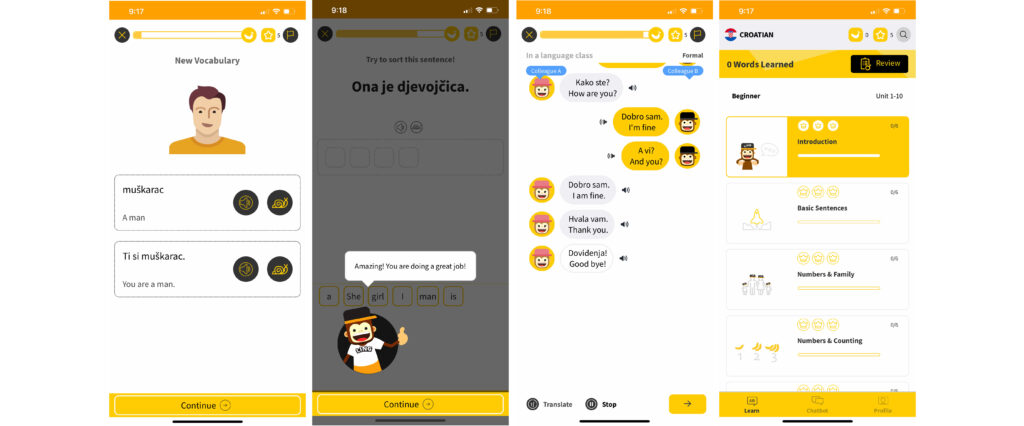
How does Ling work?
As I mentioned, Ling currently offers five levels, each of which with ten sections. Most sections include:
- Four lessons where you’re taught vocabulary and basic phrases
- A speaking lesson
- An exam
- A review section
The lessons each introduce you to a word and then give you that same word in a bit of context. In the latter, there are reports of mistakes in different languages, so this is something to be aware of when learning with the app. For the most part, it’s a good introduction to the language.
At the end of each lesson, there’s a dialogue section. The dialogue section gives you a short dialogue to help you better instill the material you learned in the vocabulary section.
The speaking lesson uses voice recognition, and like most voice recognition in language learning apps, it has its challenges. With Ling, it gives you a sentence and you record yourself reading it — it’s usually a hit or miss as to how your pronunciation gets graded.
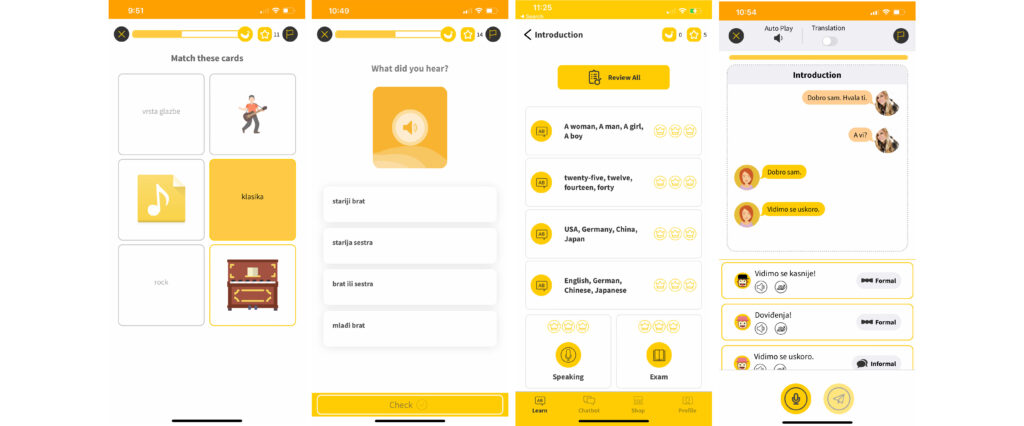
The exam tests you on what you learn in each lesson. It’s a very similar experience to each of the four individual lessons except that it tests you on content in all four of the lessons for each section, is timed, and you can only make four mistakes before “failing” the exam.
Each lesson also includes a “review all” section, but it’s really just an overview of what you’ve learned in the lesson. There’s also a review section available on the home screen. It seems like this section just shows you random words from the lessons you’ve studied. This means it doesn’t use SRS (spaced repetition) to show you the material you most need to focus on and review.
Some of the languages also have a writing section. This seems to be for languages that have a different writing system (though it wasn’t available for Persian). The writing sections have three parts for each letter or character. The first shows an animation of the character being drawn. The second shows you arrows indicating the direction each part of the letter or character should be drawn. And finally, you’re given the space to practice writing the letter.
There’s another feature that was available for certain languages, but not others — the grammar section. This section included brief explanations of the grammar that appeared in the lessons.
Finally, there is the chatbot, which is exactly what you might expect. The chatbot is a dialogue where you can choose your response from a small selection of answers. It’s not really a test, but more of a way to experience conversation in a structured way.
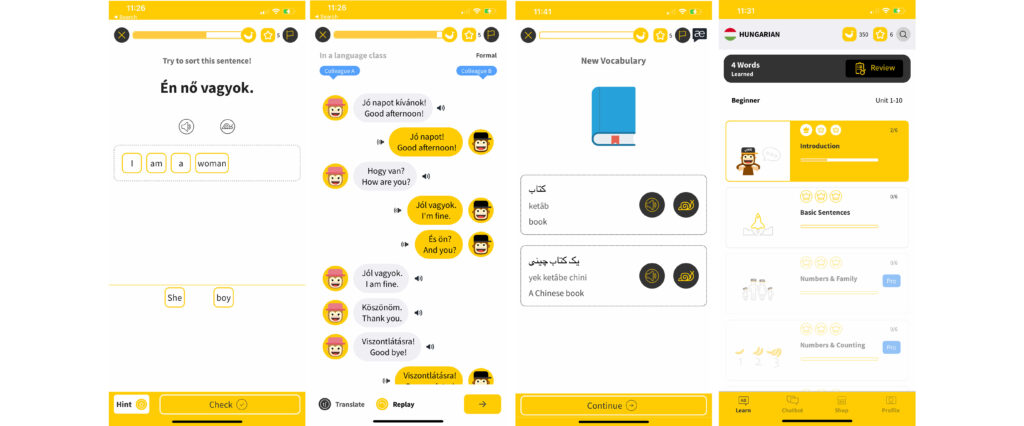
My Experience Using Ling
I enjoyed using Ling — especially because they supported languages I’m learning that I typically can’t find a lot of resources for. So, of course, I dove in with Croatian. I also spent time trying out some of the other languages I’ve studied (making sure to aim for diversity), playing around with Russian, Japanese, Chinese, and Persian.
For Persian, a language that I still heavily lean on romanization with, I found that the romanization would occasionally disappear on the fill-in-the-blank questions where I needed to select the answer in Persian. This left me guessing which is not usually an effective way to learn!
I used the course for several days and I can say I’ve definitely learned a few things in each of the languages I tried out, though it definitely was geared more towards beginners.
What Ling does great
It has a lot of effective gamified elements. You get points, you build a streak, and you can see your fluency percentage build — what’s not to love about that?
It has audio recorded by real humans. And you just can’t beat that.
They offer a wide range of languages — many of which aren’t offered by its competitors. This is gold if you’re learning a language that isn’t often taught or offered by a lot of resources.
You learn as many as 1000 words. That’s a huge start, especially when you’re enjoying getting to those 1000 words.
The lessons are short. So it makes it a great tool to use when you’re busy and trying to fit language learning into your routine.
What could Ling do better?
At the time of writing, it seems that the content taught in each of the languages offered by Ling is identical. This cookie-cutter approach doesn’t really work for language learning because language, at least the way it’s used in everyday interactions by native speakers, is highly impacted by culture and what you may need to know in a language to be an effective communicator can vary vastly from one language to the next.
From the app’s perspective, developing content in this way makes sense. It’s easy to create a wide range of content for a large selection of languages. But it doesn’t do much to really differentiate Ling from other apps doing the same thing. Plus, from the learner’s perspective, this can be problematic. You may learn the language in a way that’s quite different from how it’s used in day-to-day interactions.
There were a few bugs and certain elements of the UI weren’t incredibly intuitive, but that improved when I became more familiar with the app.
Ling Vs Duolingo
So I’m sure you’re wondering… how does Ling measure up against the most well-known language learning app on the market, Duolingo?
The experience between Ling and Duolingo are very similar — especially when it comes to the app mascots who make random appearances to cheer you on and celebrate the end of each lesson.
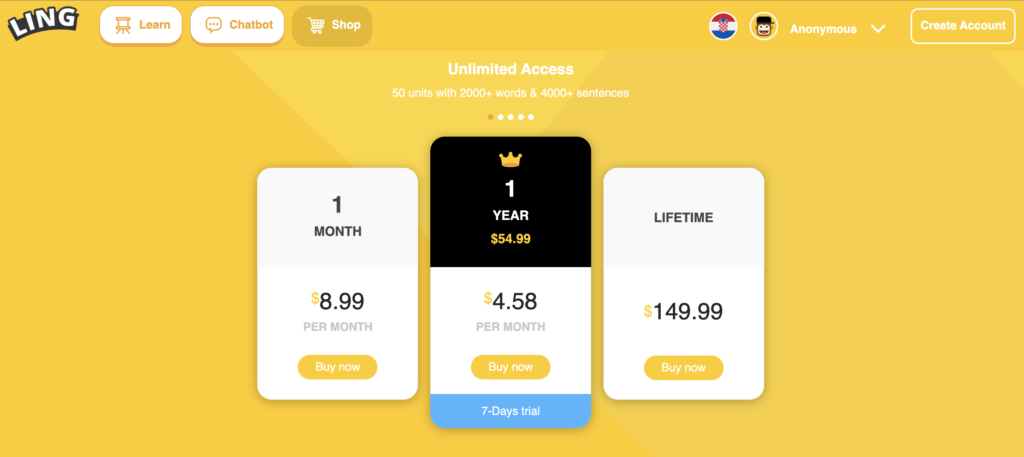
Ling feels a little more scrappy, but there’s nothing wrong with that. It stands out, however, in the fact it offers so many more languages.
In Conclusion
Ling is a fun, engaging way to learn a new language. It’s a great starting point to help you learn the basics of a new language and its gamified elements help you build a language learning habit.
Ling is $54.99 for a year or $8.99 per month. Lifetime is $149.99. This is pretty on par with the Premium pricing of other similar apps, so it really comes down to your preference. If you aren’t sure if Ling is a good fit for you, you can try out the 7-day free trial. Otherwise, the first two units of each language are free to try.
Now, over to you. Have you tried Ling? What did you think? What other language learning apps have you tried and loved? Let me know in the comments!
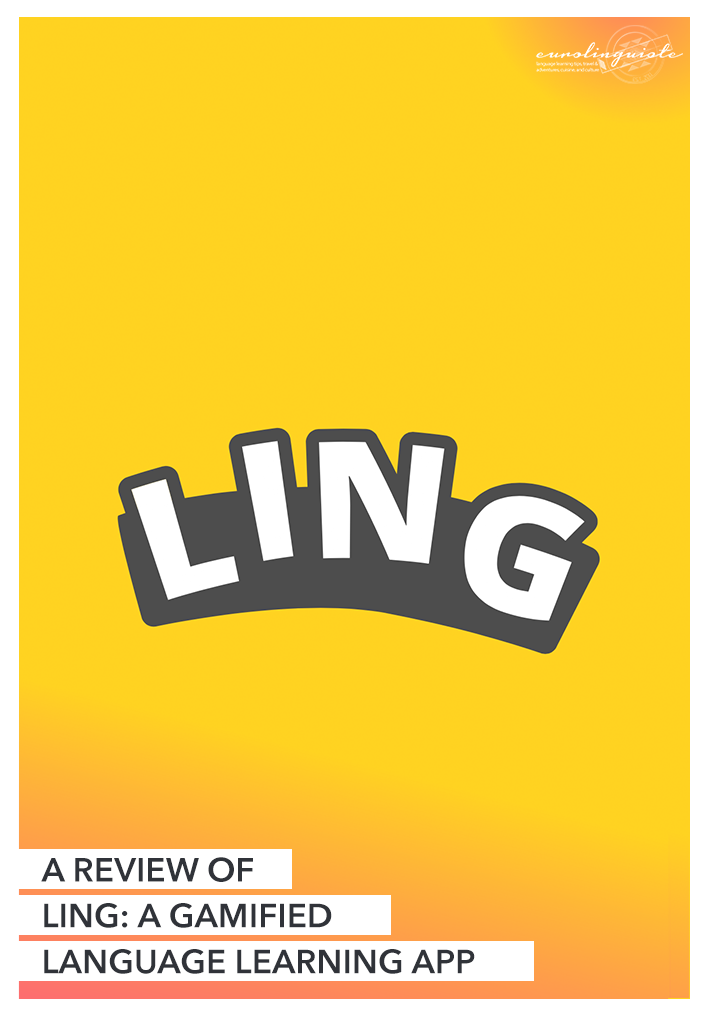
What's Your Reaction?
My name is Shannon Kennedy and I'm the language lover, traveler, and foodie behind Eurolinguiste. I'm also the Resident Polyglot at Drops and the Head Coach of the Fluent in 3 Months Challenge.








